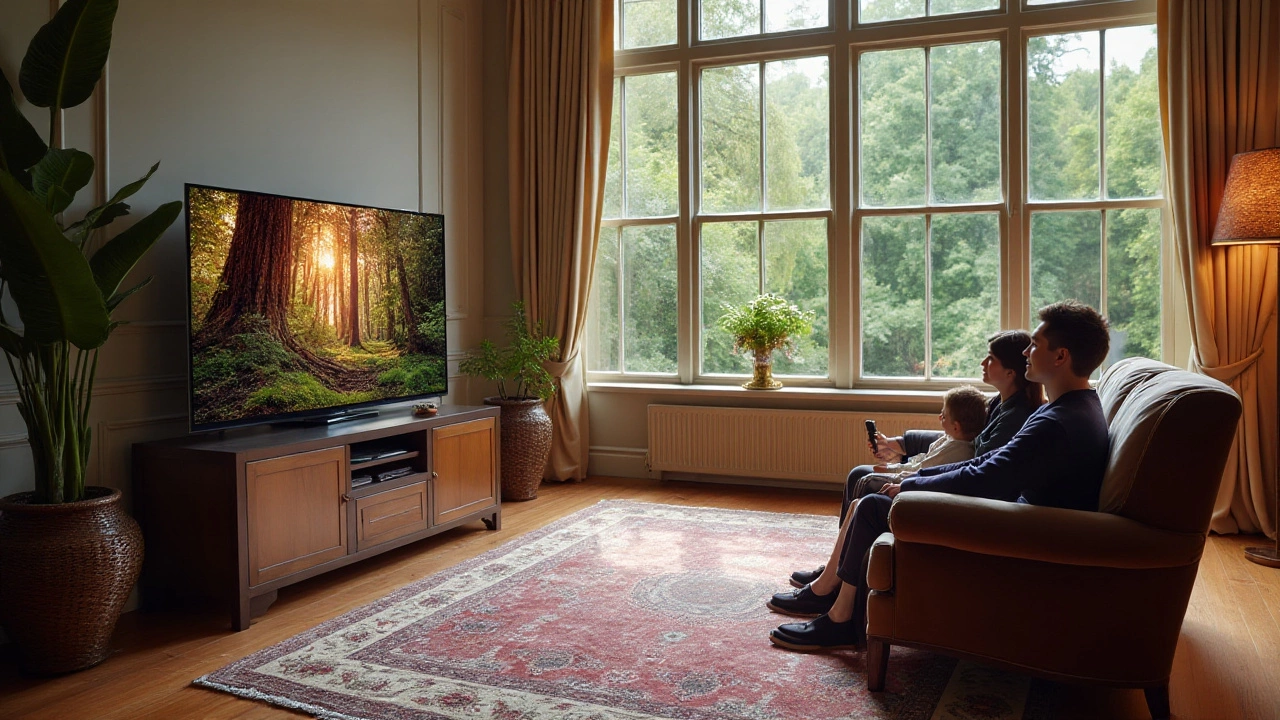TV Size Comparison: How to Pick the Right Screen for Your Room
Ever stand in a store, stare at a massive 75‑inch screen, and wonder if it will actually work in your living room? You’re not alone. Picking the right TV isn’t just about the number on the box; it’s about how the screen fits your space, how far you’ll sit, and where you’ll put it.
In this guide we break down the basics so you can compare TV sizes without guesswork. We’ll show you a quick math trick for viewing distance, the right stand width for common TV dimensions, and a few common pitfalls to sidestep.
How to Measure for the Right TV
Start with the wall or stand where the TV will live. Measure the width of the space from edge to edge – make sure you include any trim or moldings that could get in the way. Most modern TVs list their size by diagonal, but the actual width is roughly 87% of that number. For a 55‑inch TV, the screen width is about 48 inches; a 65‑inch TV is close to 57 inches wide.
Next, figure out your viewing distance. A simple rule: multiply the screen diagonal by 1.5 for comfortable viewing. So a 55‑inch TV works well about 6.9 feet away, while a 75‑inch screen feels right at around 9.5 feet. If your couch is closer than the recommended distance, you might want to step down a size to avoid a pixelated look.
Don’t forget the height. The ideal eye‑level height is roughly a third of the way down the screen when you’re seated. Measure from the floor to your eyes, then subtract a third of the TV’s height. That gives you the spot where the TV’s center should sit. If you’re mounting on a wall, use a level and make sure the bracket can handle the TV’s weight.
Common TV Size Mistakes to Avoid
One big mistake is ignoring the TV stand width. A 55‑inch TV often needs a stand that’s at least 48 inches wide, but many cheap stands are only 40 inches. That can make the TV look perched and unsafe. Check the stand’s specifications or choose a wall mount if space is tight.
Another slip is focusing only on resolution. While 4K screens let you sit closer without seeing pixels, they don’t magically make a huge TV fit a tiny room. Use the viewing distance rule first, then decide if you want the extra clarity of 4K.
Finally, think about future upgrades. If you plan to upgrade your sound system or add a gaming console, leave a bit of extra space on the back for cables and ventilation. Overcrowding can cause overheating and a messy look.
By measuring your space, applying the distance rule, and checking stand dimensions, you’ll avoid buying a TV that feels too big or too small. The right size makes movies feel cinematic, games look immersive, and everyday TV watching more comfortable.
Ready to shop? Keep this checklist handy: room width, viewing distance, TV width, stand width, eye‑level height, and extra back‑room for cables. With those numbers, you’ll be able to compare any model confidently and walk away with a screen that truly fits your life.
Understanding the Size Difference: 75-Inch vs 65-Inch TV for Your Stand
Choosing the right TV size can significantly impact your viewing experience and the atmosphere of your living space. A 75-inch TV offers a more immersive experience but requires more space compared to a 65-inch model. This article delves into the size differences, room requirements, and tips for choosing the best TV stand for these larger screens. Learn about the advantages of each size to make an informed purchase decision. Discover practical tips for optimizing your space to accommodate bigger TVs.
More
